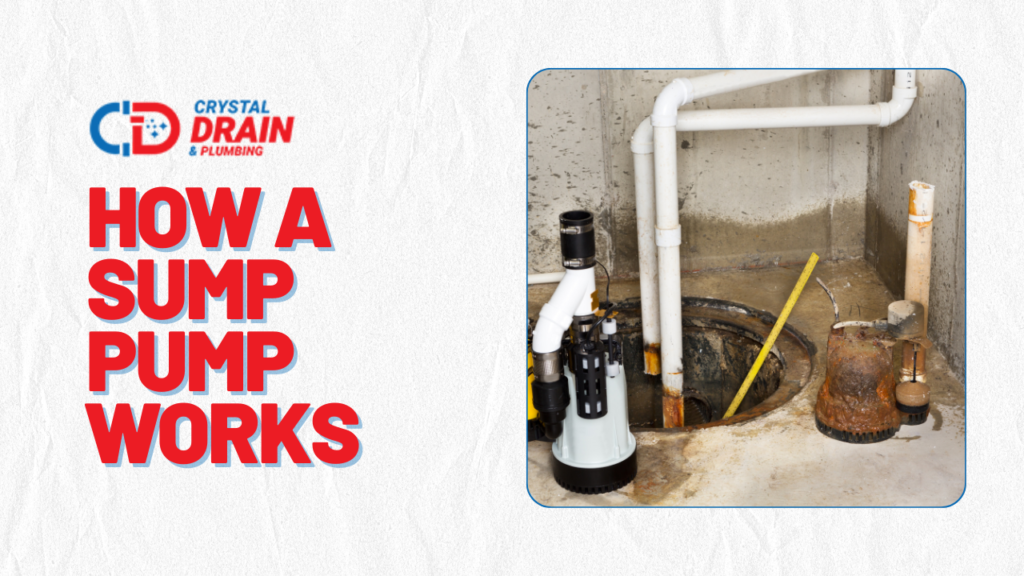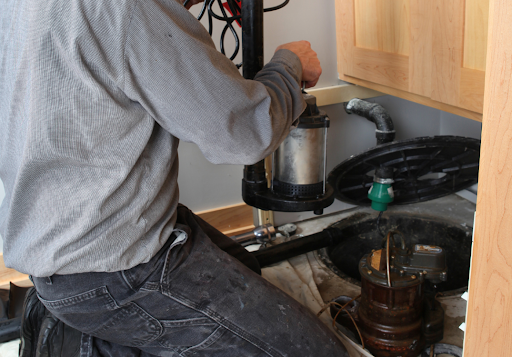- Last updated: December 23, 2024
How a Sump Pump Works: Essential Insights for Homeowners

Understanding the mechanics and importance of a sump pump is crucial for homeowners, especially those in areas prone to flooding like Toronto. This blog explores how different types of sump pumps operate and how they can protect your home from water damage.
Key Takeaways
- Primary Function: A sump pump helps keep your basement dry by pumping out excess water from the sump basin.
- Types of Pumps: Submersible, pedestal, battery backup, combination, and sewage pumps each serve different needs.
- How It Works: Activated by a float switch, the sump pump expels water through a discharge pipe to keep your home safe from flooding.
- Maintenance: Regular upkeep is essential for reliable performance, especially before the rainy season.
- Professional Help: When installation or serious issues arise, professional expertise ensures proper setup and functioning.
What is a Sump Pump?
A sump pump is a mechanical device installed at the lowest point in your basement or crawlspace, where water tends to collect. Its primary role is to prevent flooding by collecting excess water in a sump pit (a specially designed basin) and pumping it out of the home. By moving water away from your foundation, a sump pump helps prevent damage to the structure of your home and any valuable possessions stored in your basement.

Professional Remediation
Different types of sump pumps are designed to meet varying needs and conditions:
- Submersible Pumps
- Installed in the sump pit and completely submerged in water.
- Sealed to prevent electrical short circuits, making them safer to use in wet conditions.
- Quieter operation, but may require more maintenance due to constant exposure to water.
- Pedestal Pumps
- Stand above the sump pit, making them easier to service.
- More durable, but can be louder than submersible pumps.
- Ideal for homeowners who need easier access for regular maintenance.
- Battery Backup Sump Pumps
- Provide continuous pumping during power outages, ensuring the sump pump works even when the electricity goes out.
- Essential for areas with frequent storms or unreliable power sources.
- Combination Sump Pumps
- Combine a primary sump pump with a battery backup, ensuring that your system will continue to work under all conditions, including power failure.
- Combine a primary sump pump with a battery backup, ensuring that your system will continue to work under all conditions, including power failure.
- Sewage Pumps
- Similar to standard sump pumps but specifically designed to handle waste, sewage, and solid materials up to 2 inches in diameter.
- Necessary for homes with plumbing systems that may experience significant wastewater buildup.
Learn more about selecting the right sump pump for your home by checking out our detailed blog.
How Sump Pumps Work
Sump pumps operate by following a simple yet effective process:
- Water Collection: Water from rain, melting snow, or groundwater enters the sump pit either through drains or natural migration through the soil.
- Activation: A float switch in the pit detects when the water level rises to a certain height and activates the pump.
- Water Removal: Once activated, the sump pump expels the water through a discharge pipe, pushing it safely away from the home’s foundation and preventing water from seeping into the basement or crawlspace.

Installation Insights
Proper installation of a sump pump is critical for its effectiveness. Here’s what the installation process generally entails:
- Sump Pit Excavation: A hole is dug in the basement or crawlspace to create a sump pit where water can collect.
- Pump Placement: The sump pump is placed in the pit, ensuring it is properly secured and positioned for optimal water collection.
- Discharge Pipe Connection: The pump is connected to a discharge pipe that directs the water away from the house.
- Sealing and Setup: Proper sealing and alignment of the system ensure the sump pump functions smoothly and prevents leaks.
For expert installation, visit our sump pump installation service page for more information.
Maintenance Tips
To ensure that your sump pump functions properly when needed, routine maintenance is key. Here are some essential maintenance steps:
- Test the Operation: Pour water into the pit to check if the pump activates and operates correctly.
- Clear the Discharge Line: Ensure that the discharge pipe is clear of debris and free from blockages.
- Inspect Battery Backup: If you have a battery backup system, check the battery’s charge and replace it if necessary.
- Clean the Pump: Remove any dirt or debris that may have accumulated around the pump to maintain its efficiency.
Benefits of Having a Sump Pump
Investing in a sump pump provides several valuable benefits:
- Prevents Flood Damage: A sump pump removes water before it can accumulate and cause flooding.
- Reduces Mold Growth: By keeping areas dry, sump pumps help prevent the growth of mold, mildew, and fungus.
- Insurance Benefits: Homes with sump pumps in flood-prone areas may benefit from lower insurance premiums, as these systems reduce the risk of significant water damage.
When to Call a Professional
While some basic maintenance can be handled by homeowners, there are situations where professional help is necessary:
- New Installations: Proper installation ensures the sump pump works effectively and meets local building codes.
- Malfunctions: If the sump pump is not operating correctly or the pump is making unusual noises, call a professional.
- Annual Inspections: Regular professional checks can ensure your system is functioning optimally and that there are no underlying issues.
Learn more about our emergency and maintenance services for assistance with your sump pump.
Frequently Asked Questions (FAQs)
With proper maintenance, most sump pumps last between 7 and 10 years.
Signs of a malfunction include strange noises, water still collecting in the basement, or the pump running continuously without discharging water.
Yes, especially if you live in an area with frequent power outages. A battery backup will ensure that the pump continues to function even when there is no electricity.
While it is possible for DIY enthusiasts to install a sump pump, professional installation ensures the system works effectively and adheres to local codes.
Routine maintenance should be conducted at least once a year, but you should also check your system before the rainy season begins.
Conclusion
A sump pump is a critical tool for homeowners, especially those in flood-prone regions like Toronto. Understanding how your sump pump works and ensuring it is well-maintained can protect your home from potential water damage and save you money on costly repairs.
